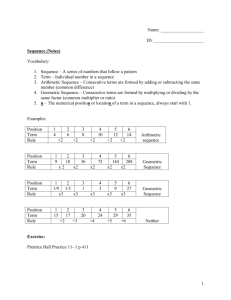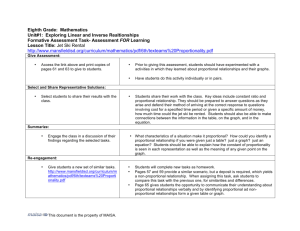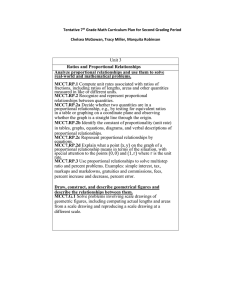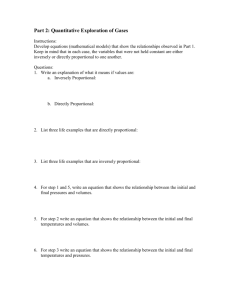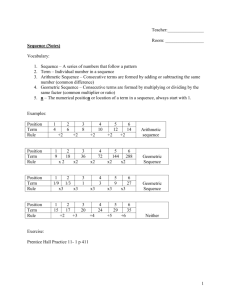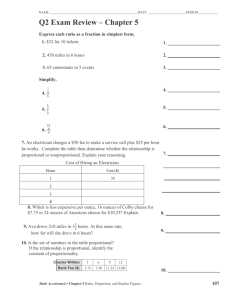Proportionality Across the Middle School TEKS Being Precise with Language Sherri Jones
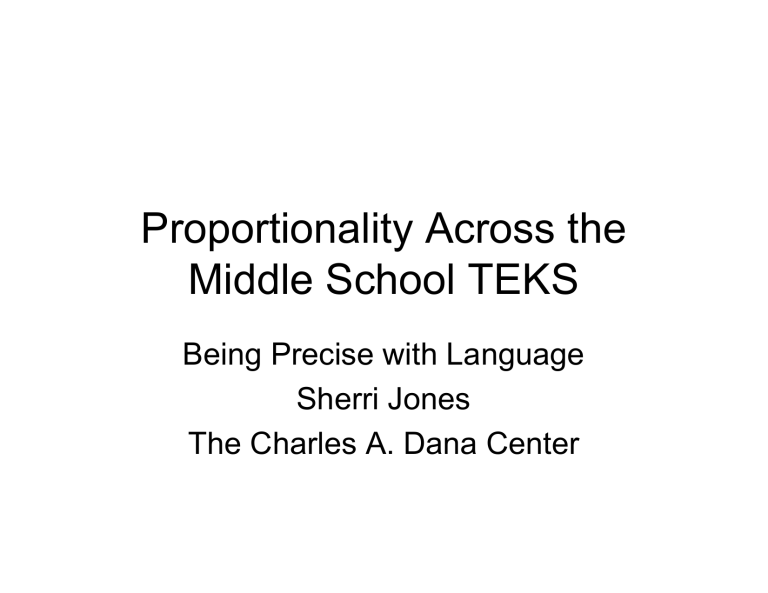
Proportionality Across the
Middle School TEKS
Being Precise with Language
Sherri Jones
The Charles A. Dana Center
6th grade
§111.22. Mathematics, Grade 6.
(a) Introduction.
(1) Within a well-balanced mathematics curriculum, the primary focal points at Grade 6 are using ratios to describe direct proportional relationships involving number, geometry, measurement, [and] probability, and adding and subtracting decimals and fractions.
(6.3) Patterns, relationships, and algebraic thinking. The student solves problems involving direct proportional relationships.
The student is expected to:
(A) use ratios to describe proportional situations;
(B) represent ratios and percents with concrete models, fractions, and decimals; and
(C) use ratios to make predictions in proportional situations.
7th grade
§111.23. Mathematics, Grade 7.
(a) Introduction.
(1) Within a well-balanced mathematics curriculum, the primary focal points at
Grade 7 are using direct proportional relationships in number, geometry, measurement, and probability; applying addition, subtraction, multiplication, and division of decimals, fractions, and integers; and using statistical measures to describe data.
(7.3) Patterns, relationships, and algebraic thinking. The student solves problems involving direct proportional relationships.
The student is expected to:
(A) estimate and find solutions to application problems involving percent; and
(B) estimate and find solutions to application problems involving proportional relationships such as similarity, scaling, unit costs, and related measurement units.
8th grade
§111.24. Mathematics, Grade 8.
(a) Introduction.
(1) Within a well-balanced mathematics curriculum, the primary focal points at
Grade 8 are using basic principles of algebra to analyze and represent both proportional and non-proportional linear relationships and using probability to describe data and make predictions.
(8.3) Patterns, relationships, and algebraic thinking. The student identifies proportional or non-proportional linear relationships in problem situations and solves problems.
The student is expected to:
(A) compare and contrast proportional and non-proportional linear relationships; and
(B) estimate and find solutions to application problems involving percents and other proportional relationships such as similarity and rates.
Proportionality terms
• Unit rate
• Ratio
• Proportion
• Scale factor
• Directly proportional
• Constant of proportionality
• Non-proportional linear
Directly proportional
• In mathematics, two quantities are called proportional if they vary in such a way that one of the quantities is a constant multiple of the other, or equivalently if they have a constant ratio.
Inversely proportional
• A relationship between two variables in which the product is a constant. When one variable increases the other decreases in proportion so that the product is unchanged.
Measuring the dimensions of a room
• In your group, estimate how many lengths of your measuring tool it will take to measure the length and width of the room.
• Use the tools to measure the length and width. Be as accurate as possible.

